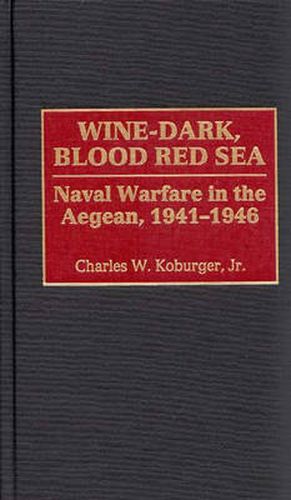Readings Newsletter
Become a Readings Member to make your shopping experience even easier.
Sign in or sign up for free!
You’re not far away from qualifying for FREE standard shipping within Australia
You’ve qualified for FREE standard shipping within Australia
The cart is loading…






After Italy’s surrender to the Allies in September 1943, German naval forces took control of the entire Aegean, and the resulting guerilla war in the narrow seas and littoral waters continued to rage until the general peace. Naval warfare in the narrow seas is different from naval actions on the high seas, requiring different types of ships and craft and different mindsets. In the cramped and narrow inshore waters, which can easily be dominated from the shore, sea mines, shore-based air support and small submarines play a major role. An analysis of the battle for the Aegean provides a good example of the types of fighting the US Navy might face in a future conflict, now that grande guerre on the high seas has become more and more unlikely. In an attempt to assist an embattled Greece, the British Mediterranean Fleet fought the Italians and the Germans in a valiant effort to regain the Aegean. By the time Italy left the war in 1943, the Allies’ big battalions and mighty fleets had been transferred to other more pressing campaigns, leaving behind the remaining small craft to take up the fight. Adopting a policy of pinning down those Germans garrisoning the Aegean, the British resorted to the use of raiding and coastal forces, a tactic which would eventually force the Germans from all but their most key positions.
$9.00 standard shipping within Australia
FREE standard shipping within Australia for orders over $100.00
Express & International shipping calculated at checkout
Stock availability can be subject to change without notice. We recommend calling the shop or contacting our online team to check availability of low stock items. Please see our Shopping Online page for more details.
After Italy’s surrender to the Allies in September 1943, German naval forces took control of the entire Aegean, and the resulting guerilla war in the narrow seas and littoral waters continued to rage until the general peace. Naval warfare in the narrow seas is different from naval actions on the high seas, requiring different types of ships and craft and different mindsets. In the cramped and narrow inshore waters, which can easily be dominated from the shore, sea mines, shore-based air support and small submarines play a major role. An analysis of the battle for the Aegean provides a good example of the types of fighting the US Navy might face in a future conflict, now that grande guerre on the high seas has become more and more unlikely. In an attempt to assist an embattled Greece, the British Mediterranean Fleet fought the Italians and the Germans in a valiant effort to regain the Aegean. By the time Italy left the war in 1943, the Allies’ big battalions and mighty fleets had been transferred to other more pressing campaigns, leaving behind the remaining small craft to take up the fight. Adopting a policy of pinning down those Germans garrisoning the Aegean, the British resorted to the use of raiding and coastal forces, a tactic which would eventually force the Germans from all but their most key positions.